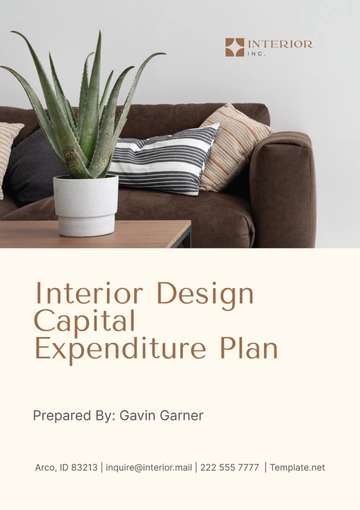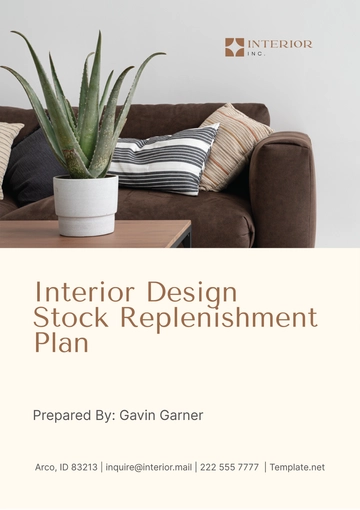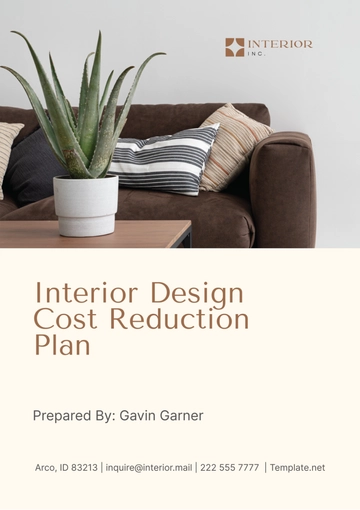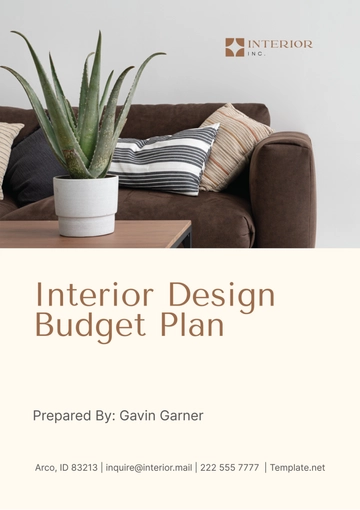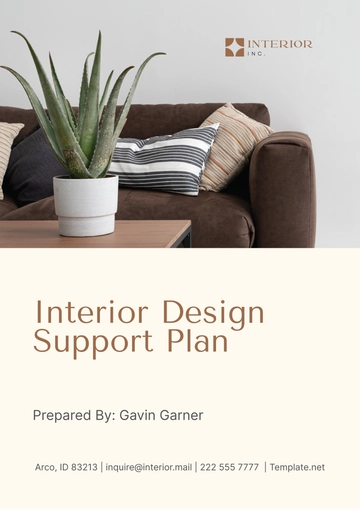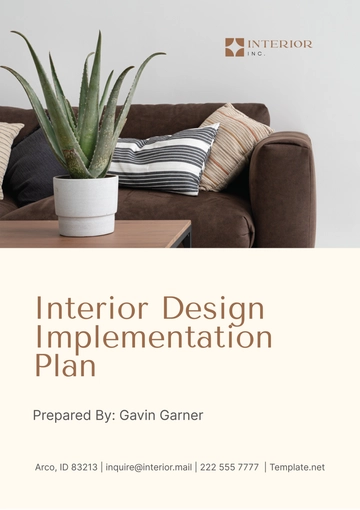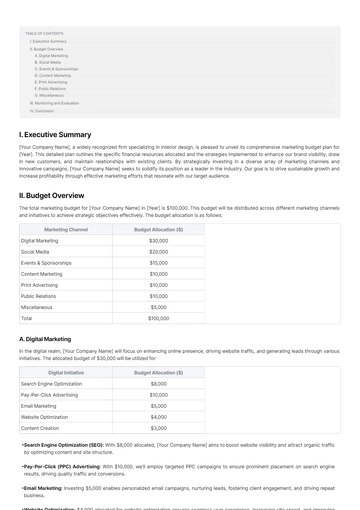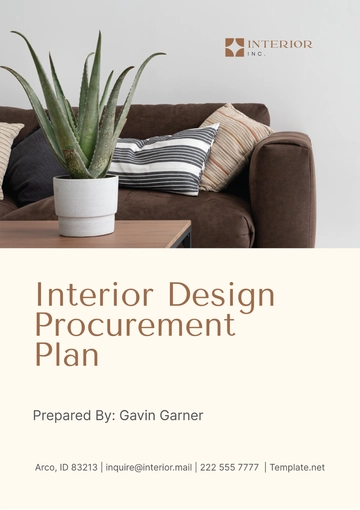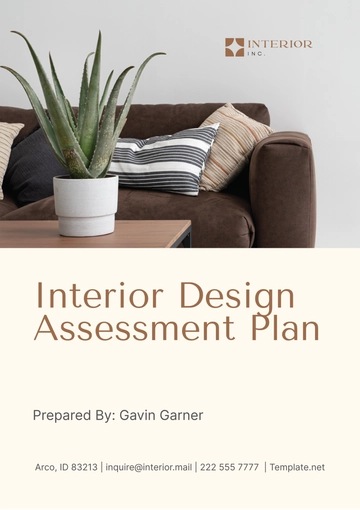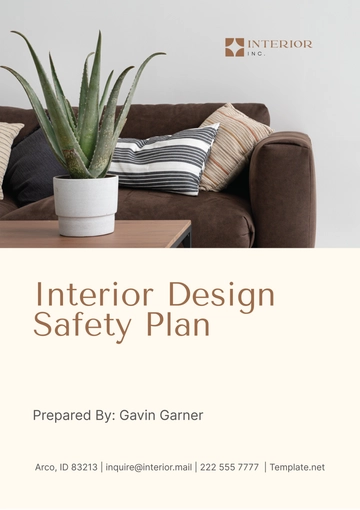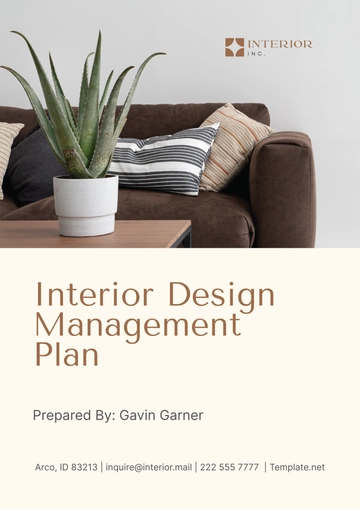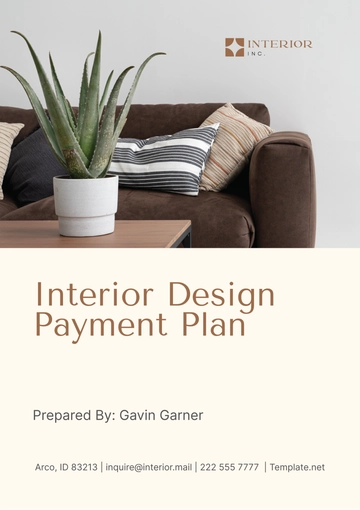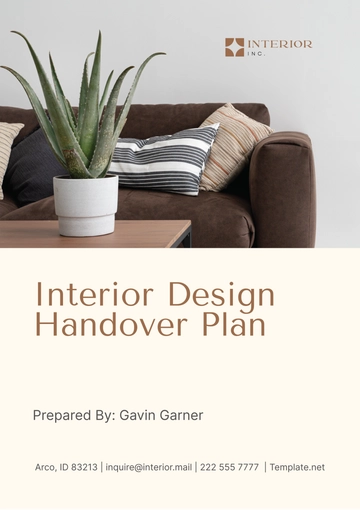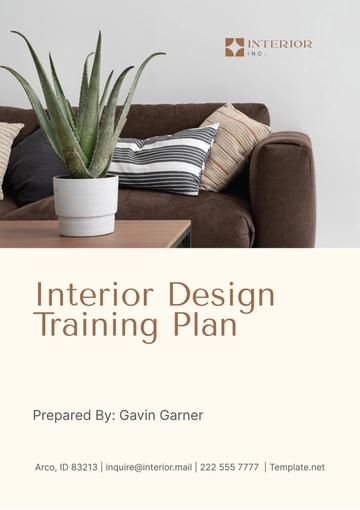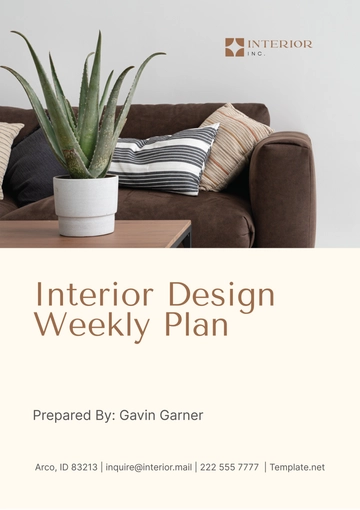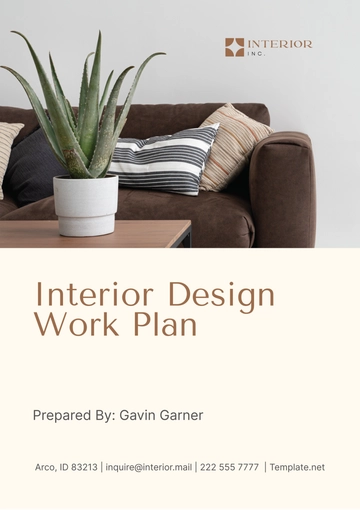Free Interior Design Stock Replenishment Plan
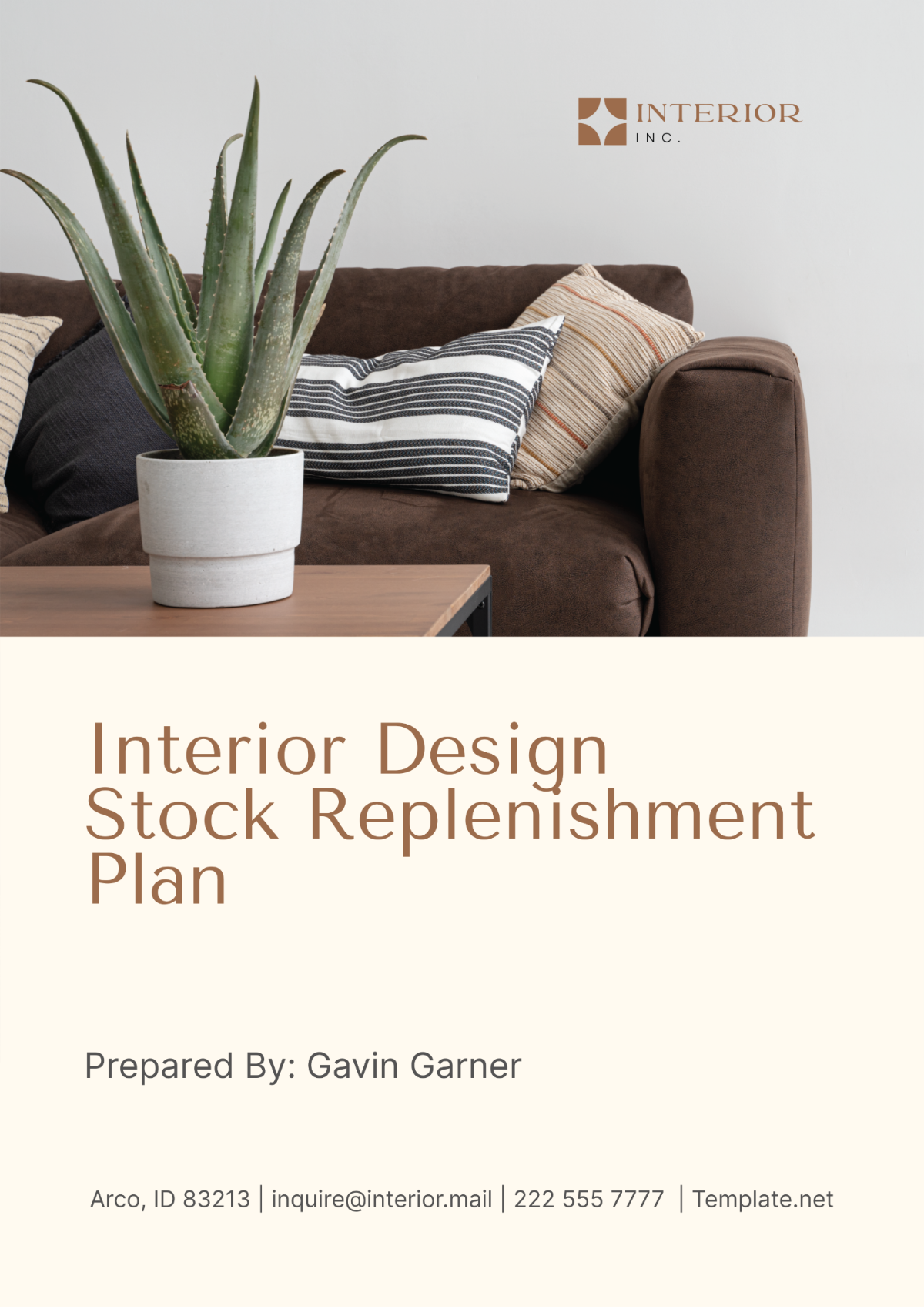
I. Introduction
This document outlines our strategic approach to stock replenishment, ensuring that our inventory levels are maintained effectively to meet the demands of ongoing and upcoming interior design projects while minimizing costs associated with overstocking and storage. The scope of this plan includes all categories of our inventory, from textiles and furniture to decorative accessories and lighting fixtures, ensuring that each component is available as needed without surplus.
II. Inventory Analysis
A. Current Levels
Our current inventory levels are closely monitored to match project demands while optimizing storage use. Below is a table detailing the types of inventory, their current levels, and usage rates:
Inventory Type | Current Level | Usage Rate |
|---|---|---|
Textiles | 1,000 yards | 80% |
Furniture | 200 pieces | 70% |
Decorative Items | 1,200 pieces | 50% |
Lighting Fixtures | 300 units | 60% |
The usage rates indicate how effectively our current stock meets client needs, with textiles and furniture showing higher turnover due to frequent use in various design projects.
B. Historical Data
Analyzing historical data helps us understand trends and prepare for future fluctuations. The following table shows inventory levels over the past five years, highlighting seasonal peaks and troughs:
Year | Textiles (yards) | Furniture (pieces) | Decorative Items (pieces) | Lighting Fixtures (units) |
|---|---|---|---|---|
Year 1 | 900 | 180 | 1,000 | 280 |
Year 2 | 950 | 190 | 1,100 | 290 |
Year 3 | 1,000 | 200 | 1,200 | 300 |
Year 4 | 1,050 | 210 | 1,300 | 310 |
Year 5 | 1,100 | 220 | 1,400 | 320 |
This data indicates a steady increase in inventory levels, aligning with growth in client projects and expansion of our design offerings.
III. Replenishment Objectives
To ensure optimal stock levels and cost efficiency, our replenishment objectives include:
Maintaining Adequate Stock Levels: Ensure sufficient inventory is available to meet the demands of our projects without causing delays.
Minimizing Excess Inventory: Reduce costs related to overstocking, including storage and potential wastage.
Improving Inventory Turnover: Enhance the frequency of inventory usage and replacement to keep our stock fresh and relevant.
Enhancing Forecast Accuracy: Utilize historical data and current trends to predict future needs more accurately.
Streamlining the Ordering Process: Simplify the process of inventory replenishment to reduce lead times and improve efficiency.
These objectives aim to balance the need for a readily available supply of design materials with the practicalities of cost and space management, ensuring our operations are both efficient and responsive to market demands.
IV. Replenishment Strategies
To achieve our replenishment objectives efficiently, we have established several strategies that will guide our approach to managing inventory levels:
Just-In-Time (JIT) Ordering: We will order inventory only as it is needed for specific projects, reducing holding costs and minimizing the risk of overstock.
Economic Order Quantity (EOQ): By calculating the EOQ, we aim to minimize the total costs associated with ordering and holding stock, ensuring we order the most cost-effective quantity.
ABC Analysis: Inventory items will be categorized based on their value and turnover rate. High-value items with a fast turnover (Category A) will be monitored more frequently, whereas lower value and slower-moving items (Categories B and C) will have less stringent monitoring and control.
Safety Stock Levels: We will maintain a minimal level of safety stock for critical items to prevent stockouts, especially for materials that have long lead times or are critical to multiple projects.
Vendor Managed Inventory (VMI): Where feasible, we will collaborate with suppliers to manage stock levels directly, which helps in reducing our inventory carrying costs and enhances replenishment efficiency.
V. Demand Forecasting
Accurate demand forecasting is critical to our inventory management. Below is a table projecting our inventory needs for the next year, based on historical data and anticipated market trends:
Inventory Type | Next Year |
|---|---|
Textiles | 1,200 yards |
Furniture | 230 pieces |
Decorative Items | 1,450 pieces |
Lighting Fixtures | 350 units |
The forecast indicates a continued increase in demand, especially for decorative items and lighting fixtures, reflecting current interior design trends. This forecasting helps us plan our inventory purchases more precisely, ensuring that we have the right amounts of stock available when needed without overcommitting resources.
VI. Ordering Process
Our ordering process is designed to be streamlined and efficient, ensuring timely replenishment of inventory with minimal administrative overhead. Here are the specifics of our ordering process:
Order Approval Levels: Orders below $5,000 can be approved by the Inventory Manager. Orders between $5,000 and $15,000 require the approval of the Financial Controller, and orders above $15,000 must be approved by the Director of Operations.
Supplier Selection Criteria: Suppliers are chosen based on reliability, quality of materials, cost-effectiveness, and their ability to meet delivery deadlines. Regular reviews of supplier performance are conducted to ensure compliance with our standards.
Purchase Order System: All orders are processed through our digital purchase order system, which tracks orders from placement through to delivery and invoicing, ensuring transparency and accountability.
Regular Inventory Reviews: Inventory levels are reviewed on a monthly basis, or more frequently if needed, to adjust orders according to the latest demand forecasts and project requirements.
VII. Replenishment Schedule
The replenishment schedule is meticulously planned to ensure that inventory levels are consistently aligned with our project needs and demand forecasts. The schedule below details the timing for reviewing and reordering each category of inventory throughout the year:
Inventory Type | Review Period | Reorder Month |
|---|---|---|
Textiles | Monthly | January, June |
Furniture | Quarterly | March, September |
Decorative Items | Bi-monthly | February, August |
Lighting Fixtures | Monthly | May, November |
Inventory reviews are conducted more frequently for items with higher turnover rates, such as textiles and lighting fixtures, to prevent stockouts and ensure a steady supply for ongoing projects. This approach allows us to maintain flexibility and respond quickly to any changes in project requirements or market conditions.
VIII. Monitoring and Reporting
To maintain control over our inventory and ensure the efficiency of our replenishment strategy, we will implement a robust system for monitoring and reporting. This system will track all orders from placement to delivery and will be integrated with our inventory management software to provide real-time updates on stock levels and order status.
Key performance indicators, including order accuracy, fulfillment times, and supplier performance, will be regularly reviewed. Monthly reports will be generated to provide an overview of inventory status, highlighting any discrepancies, potential stockouts, or overstock situations. This ongoing monitoring will enable us to maintain optimal inventory levels and enhance our operational efficiency.
IX. Review and Adjustment
The plan will be reviewed semi-annually, with adjustments made as necessary to align with new data and strategic goals. These reviews will consider factors such as changes in demand patterns, supplier performance, and the effectiveness of current inventory strategies. Adjustments may include changes to the reorder points, safety stock levels, and replenishment frequencies. Feedback from these reviews will be utilized to continuously refine our processes, ensuring that our inventory management remains efficient and cost-effective
- 100% Customizable, free editor
- Access 1 Million+ Templates, photo’s & graphics
- Download or share as a template
- Click and replace photos, graphics, text, backgrounds
- Resize, crop, AI write & more
- Access advanced editor
Introducing the Interior Design Stock Replenishment Plan Template, exclusively on Template.net! Stay on top of your inventory effortlessly with this editable and customizable tool. Tailored for interior designers, it ensures a strategic approach to stock replenishment. Customize it to meet your specific needs, all editable in our intuitive AI Editor tool. Simplify your replenishment planning and focus more on refining your creative designs!
You may also like
- Finance Plan
- Construction Plan
- Sales Plan
- Development Plan
- Career Plan
- Budget Plan
- HR Plan
- Education Plan
- Transition Plan
- Work Plan
- Training Plan
- Communication Plan
- Operation Plan
- Health And Safety Plan
- Strategy Plan
- Professional Development Plan
- Advertising Plan
- Risk Management Plan
- Restaurant Plan
- School Plan
- Nursing Home Patient Care Plan
- Nursing Care Plan
- Plan Event
- Startup Plan
- Social Media Plan
- Staffing Plan
- Annual Plan
- Content Plan
- Payment Plan
- Implementation Plan
- Hotel Plan
- Workout Plan
- Accounting Plan
- Campaign Plan
- Essay Plan
- 30 60 90 Day Plan
- Research Plan
- Recruitment Plan
- 90 Day Plan
- Quarterly Plan
- Emergency Plan
- 5 Year Plan
- Gym Plan
- Personal Plan
- IT and Software Plan
- Treatment Plan
- Real Estate Plan
- Law Firm Plan
- Healthcare Plan
- Improvement Plan
- Media Plan
- 5 Year Business Plan
- Learning Plan
- Marketing Campaign Plan
- Travel Agency Plan
- Cleaning Services Plan
- Interior Design Plan
- Performance Plan
- PR Plan
- Birth Plan
- Life Plan
- SEO Plan
- Disaster Recovery Plan
- Continuity Plan
- Launch Plan
- Legal Plan
- Behavior Plan
- Performance Improvement Plan
- Salon Plan
- Security Plan
- Security Management Plan
- Employee Development Plan
- Quality Plan
- Service Improvement Plan
- Growth Plan
- Incident Response Plan
- Basketball Plan
- Emergency Action Plan
- Product Launch Plan
- Spa Plan
- Employee Training Plan
- Data Analysis Plan
- Employee Action Plan
- Territory Plan
- Audit Plan
- Classroom Plan
- Activity Plan
- Parenting Plan
- Care Plan
- Project Execution Plan
- Exercise Plan
- Internship Plan
- Software Development Plan
- Continuous Improvement Plan
- Leave Plan
- 90 Day Sales Plan
- Advertising Agency Plan
- Employee Transition Plan
- Smart Action Plan
- Workplace Safety Plan
- Behavior Change Plan
- Contingency Plan
- Continuity of Operations Plan
- Health Plan
- Quality Control Plan
- Self Plan
- Sports Development Plan
- Change Management Plan
- Ecommerce Plan
- Personal Financial Plan
- Process Improvement Plan
- 30-60-90 Day Sales Plan
- Crisis Management Plan
- Engagement Plan
- Execution Plan
- Pandemic Plan
- Quality Assurance Plan
- Service Continuity Plan
- Agile Project Plan
- Fundraising Plan
- Job Transition Plan
- Asset Maintenance Plan
- Maintenance Plan
- Software Test Plan
- Staff Training and Development Plan
- 3 Year Plan
- Brand Activation Plan
- Release Plan
- Resource Plan
- Risk Mitigation Plan
- Teacher Plan
- 30 60 90 Day Plan for New Manager
- Food Safety Plan
- Food Truck Plan
- Hiring Plan
- Quality Management Plan
- Wellness Plan
- Behavior Intervention Plan
- Bonus Plan
- Investment Plan
- Maternity Leave Plan
- Pandemic Response Plan
- Succession Planning
- Coaching Plan
- Configuration Management Plan
- Remote Work Plan
- Self Care Plan
- Teaching Plan
- 100-Day Plan
- HACCP Plan
- Student Plan
- Sustainability Plan
- 30 60 90 Day Plan for Interview
- Access Plan
- Site Specific Safety Plan
